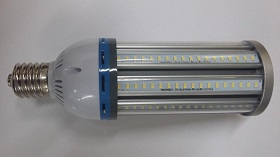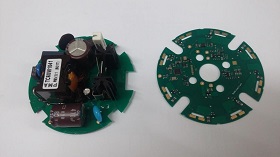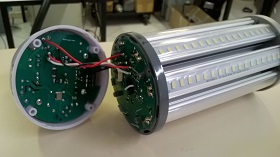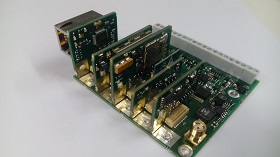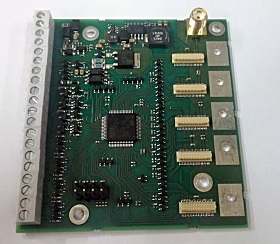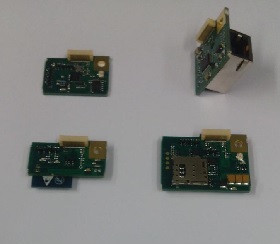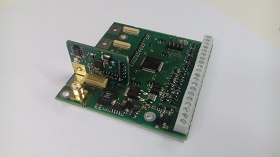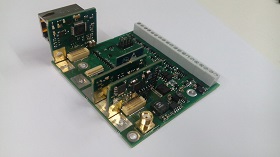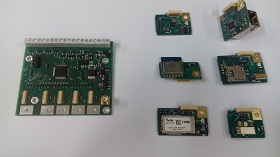LAMPANET
Development of smart lamps with low consume for street lighting
DESCRIPTION
The project lampanet, cofinanced by european fund for regional development, concerned the development of a new lamp family which allow to transform
any lighting network in a communication network simply changing lamp, without any modification of the preexisting infrastructure architecture and funcionalities.
Lamps are treated as nodes of a wireless network which allow information exchange through nearby elements and permitting the use of new and numerous systems to increase
social security and public utilities, starting from the lightning network itself.
Solution proposed is an electronic technology whose potential resides on due main aspects:
- modular conception, possible through a "block" architecture (slot) which permits to add functionality to the lamp in any moment just adding the proper slot.
- the development of a mutual signal interference cancellation system whihc permits to implement a data transmission highly trustworthy based on different communication protocols.
During project devlopment, Redox deposted two patents.
First patent is an industrial invention, with title "Development of multiprotocol modular communication" and concerns the realization of a modular system able to accept one or more communication
modules, without changing physical system's base configuration.
Second patent, with title "High efficency LED lamp" concerns the automation regolation process of the areas lightned by the lamp, working indipendently from its orientation
and from eventual lamp substitution with another. Lighting mode required can be transferred lamp to lamp automatically, so that multiple lampposts can be programmed
in an instant. Such programming can be used on other aiding functions, which will be transferred automatically to each lamp in the same way.
OBJECTIVES
Project objective wasto develop a new generation lamp which could, through data transmission, exchange information on nearby
environment and elements belonging to it.
Every lightning system, public or private, can become a wireless network simply changing a lamp.
To validate the developed tecnology the project had two specific objectives:
- creation of a wireless full-mesh network or daisy-chain based on a "master-slave" communication.
- development of an hardware and firmware component for prototype realization.
